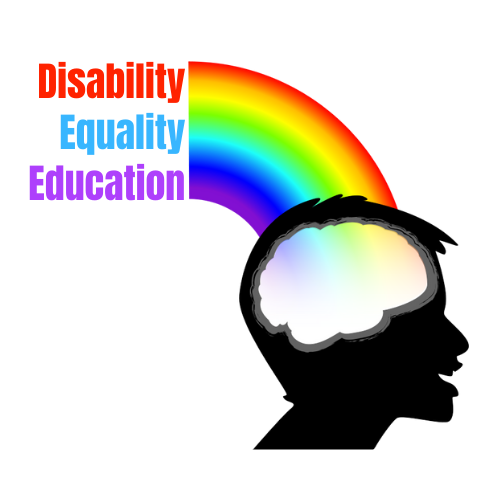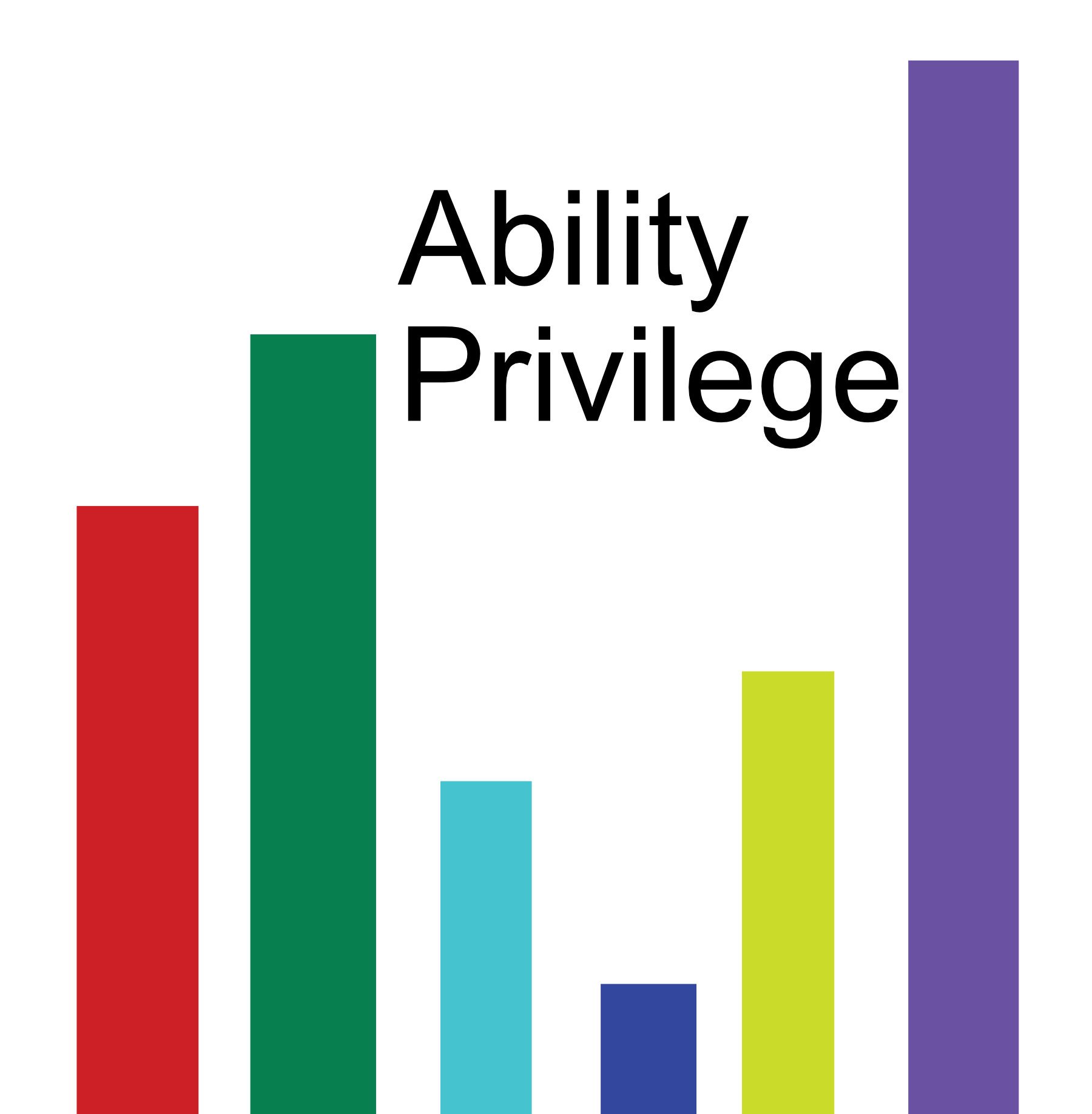
Ability Privilege Lesson
This activity is designed for students to reflect on their own lives and their privilege status. Unfortunately in our society certain groups can navigate with ease, while others must fight for their basic rights. Students will reflect on how their ability (able-bodied or disabled) affects their lives and how they can use their privilege to help others.
Image Description: various heights of different colored bars lined up next to one another. The words “Ability Privilege” towards the top.
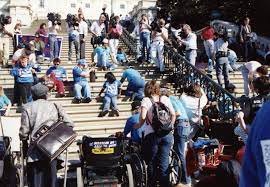
Access is a Civil Right - Capitol Crawl
This lesson plan is a guide for how you can have a discussion with your students about the history of the ADA and, more specifically, the Capitol Crawl, which was a protest that was successful in urging congress to vote on the ADA. The lessons center around a 9 minute video that tells the story of the Capitol Crawl. There is a worksheet that goes with this lesson.
Image description: photograph of dozens of protesters on the steps of the Capitol building. Some are standing, some in wheelchairs, many are crawling up the steps.
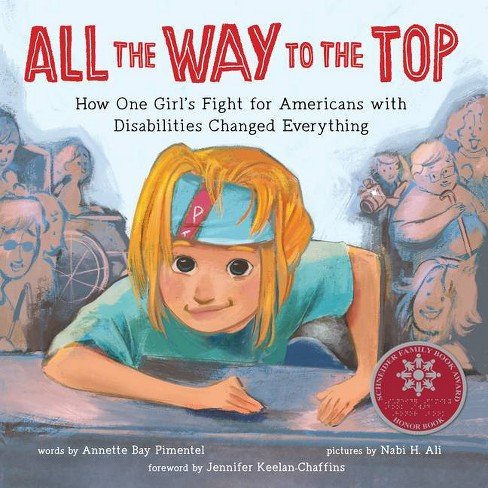
“All The Way To The Top” book lesson plan
In this lesson students will learn new vocabulary words and explore important civil rights themes by reading the book “All the Way to the Top” by Annette Bay Pimentel. “All the Way to the Top” tells the childhood story of Jennifer Keelan-Chaffins, who climbed all the way to the top of the stairs of the US capitol in 1990 to encourage congress to pass the Americans with Disabilities Act (ADA). Jennifer has cerebral palsy and became famous for the photos taken of her while climbing the stairs without a wheelchair at just 8 years old. The book tells the story from her perspective and covers how she felt she was not treated equally in her community and how she and other activist worked to get the ADA passed.
Image description: Cover artwork for “All the Way to the Top”
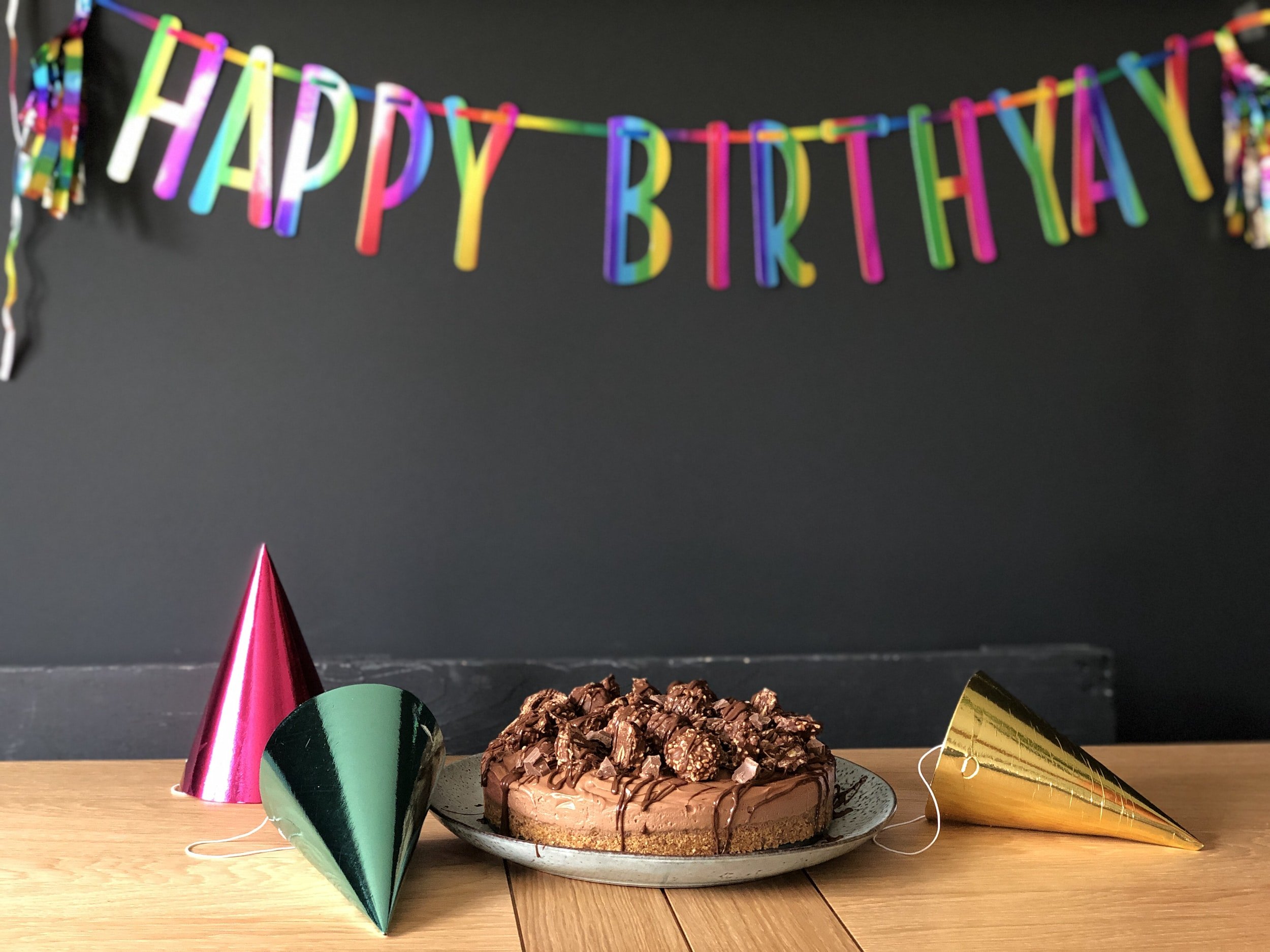
Birthday Party Lesson Plan
In this lesson, students will consider what accommodations they can make in order to be more inclusive of their peers with disabilities.
Image description: Photo of cake, birthday hats and Happy Birthday banner

Black Disabled Art History Lesson
Students will select a Black Disabled artist from Leroy Moore’s Black Disabled Art History 101. Students will research their selected artist and their works. Students will choose a piece of artwork created by this artist and analyze it using a critical artistic framework. This lesson can be adapted for a wide range of ages.
Image description: Cover photo of Black Disabled Art History 101
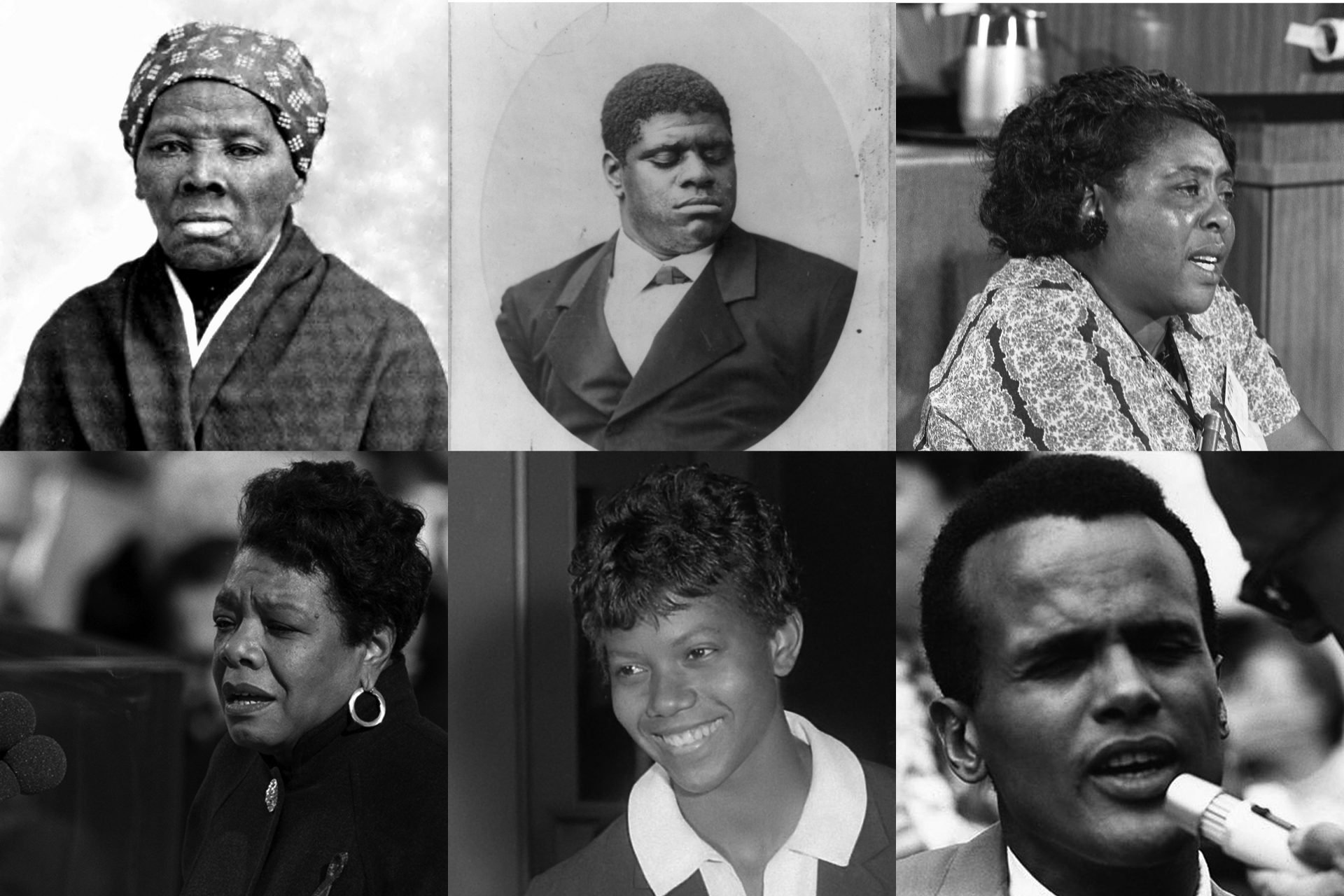
Black Disabled History Lesson
In this lesson, students will be invited to research a famous Black Disabled person, either from history or modern day. Students will work in groups or individually to research their assigned person and create a final project in a creative format. Students will then present their findings to the class.
Image description: Photos of 6 famous Black Disabled people: Harriet Tubman, Tom Wiggans, Fannie Lou Hamer, Maya Angelou, Wilma Rudolph, and Harry Belafonte
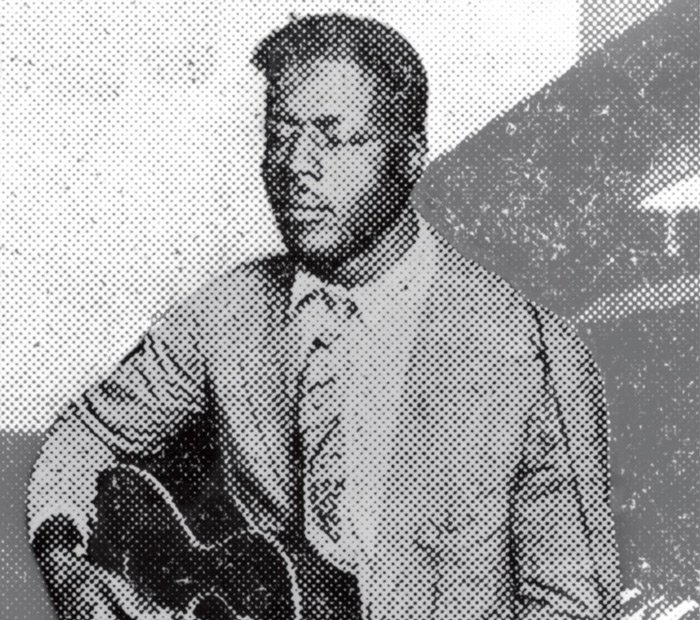
Blind Willie Johnson Lesson
Students will learn about one of the most influential blues guitarists of the early 1900s, Blind Willie Johnson. They will read an article detailing his life and how he is remembered. The class will then listen to an example of his music, and covers of his music. Students will also discuss how blind musicians can help advance the discussion concerning the stigma of disability.
Image description: halftone photograph of Blind Willie Johnson
Circle of Friends Lesson
Students will participate in an exercise and discussion on disability and segregation. In this lesson students will map out social interactions in their everyday lives. After they complete the exercise the teacher will facilitate a discussion on segregation. Students with disabilities who grow up in institutions are effectively segregated from the rest of the population, so their social circles tend to look very different from the students in class. This lesson is split into two class periods.
Image description: Overlapping circles with various disability icons inside each circle

Crip Camp Curriculum
In this collection of lesson plan, students will learn about media literacy and apply those skills to the media created for the film CRIP CAMP; will explore the concepts of power and justice, and how they relate to disability rights and disability justice; will explore the concepts of power, civil rights, and human rights, and how these concepts relate to disability rights, and then apply those skills to the media created for the film CRIP CAMP; will understand how language is connected to power and ableism; and discuss how the strategic use of power helped the disability rights movement in the US evolve.
Image Description: “Crip Camp Curriculum” in white text on green background

Critical Media Analysis: Autistic characters in children’s media
Summary:
In this lesson, students will look at four different characterizations of autistic children in contemporary media. They will watch excerpts or videos featuring the characters, read about the characters, and study how they were created. They will then fill out an evaluation chart to analyze the different depictions. They will have a group discussion as a class and write a reflective response.
Issues considered will include: character’s role within the show/movie; who was involved in writing/creating the characters; what public response has been; and so on. The lesson will conclude with a group discussion and students will complete a journal-style piece of writing as an exit ticket.
The characters that the students will learn about are:
Julia from the television show Sesame Street;
Pablo from the television show Pablo;
the main character from a Pixar short called Loop;
Carl, from the show Carl the Collector.
Image Description: Upper left quadrant is Julia, a muppet with yellow skin and orange hair. Upper right quadrant shows the main character from Loop, a girl with brown skin and dark hair who is reaching with her hands to touch reeds. Bottom left quadrant shows Pablo, a hand-drawn boy with light skin standing on a green hill with a rainbow behind him. Bottom right quadrant shows Carl, an illustrated raccoon wearing an argyle sweater.

Deaf President Now Unit
This unit focuses on the historical event that caused a ripple in the Deaf community, Deaf President Now. The unit includes three lessons, three projects, and a lot of fun!
Image Description: Black and white photo of students holding a banner that says “Deaf Prez Now!”.

The Day the World Heard ... Kent State and Gallaudet University
Students will be introduced to two important events in US history – the Kent State Massacre and Deaf President Now protest. They will be exposed to the events that occurred on the two college campuses and their outcomes. They will read the First Amendment and be presented with information to assist them in drawing conclusions about whether these were peaceful protests. They will obtain information to assist them in comparing and contrasting the two events. As the culminating activity, students will create a storyboard about May 4, 1970 at Kent State.
* NOTE: This lesson could be taught during Deaf Awareness week and the following week ‐‐ could encompass ASL, history and ELA classes.
Image Description: Colorful painting depicting a protest scene in front of a domed building. In the foreground, several figures are holding a large sign that reads "DEAF PRESIDENT NOW" in red letters. There are also several flags in vibrant colors, including red, blue, and yellow, being waved by the crowd.
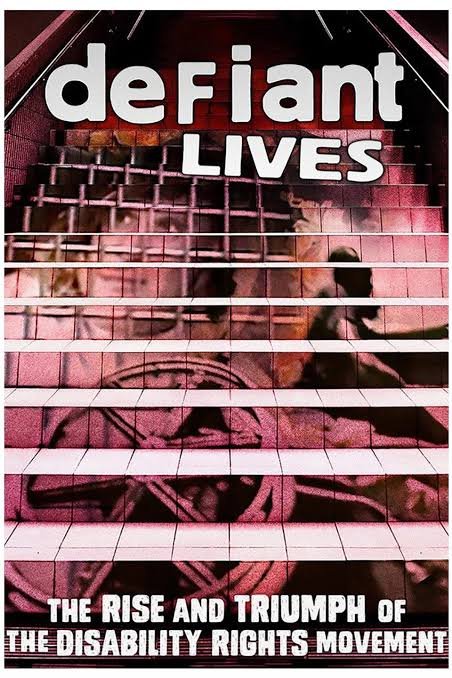
Defiant Lives Disability Rights Lesson
Students will watch “Defiant Lives: The Rise and Triumph of the Disability Rights Movement in the United States, England, and Australia.” It covers important milestones in disability activism, from breaking people out of nursing homes to advocating for equal rights. The discussion topics in the film vary from institutionalization to passing legislation. The film highlights in particular, the vast differences between the medical model of disability and the social model of disability. For 5 days, students will watch a segment of the film and record their own thoughts and then discuss their thoughts with a partner and the full group. The last two days students will work together to create their own plan to address an issue in their own community.
Image description: Defiant Lives poster showing stairs and projected onto the stairs is a pink and black wheelchair and disability activist. Text at the top says Defiant Lives and text at the bottom says the Rise and Triumph of the Disability Rights Movement

Demystifying Pennhurst State School Lesson
In this lesson students will compare and contrast 3 videos on Pennhurst State School. Students will delve into two narratives, The “horror” and “historical”. In a class discussion, students will discuss the implications of each narrative on how society views mental illness and intellectual disability. Students will learn about Pennhurst and the historic self-advocacy of the residents and the eventual closing of the PA institution.
Image description: Black and white photograph of Pennhurst

Disability History through Primary Sources
As our friends from Engaging America state, “Primary sources … can provide entry points and deepen exploration into historical events. Primary sources add immediacy, such as the faces in a photograph, the emotional tone of a drawing or song, or the complex look of a handwritten document. Documents from multiple points of view can illuminate conflicting ideas and events. Varied media, including maps, oral histories, published reports, and graphs offer many options for connection and investigation”.
We share these collections or primary sources as tools to continue introducing disability into the conversation from natural perspectives, using disabled people to tell their own stories whenever possible.
Image Description: Article from Dallas Times Herald, Wednesday, January 14, 1986 in section “Community Close-Up” titled “Police on sidewalk wheelchair ramps changed”
Full image description can be found at: https://adaptmuseum.net/gallery/picture.php?/451/category/16

Disability History Timeline Lesson
This lesson is meant to accompany Disability Equality in Education’s Disability History Timeline. Printable images are included in the materials to use with this lesson. In this lesson, students will select a moment from disability history and analyze its importance.
Image description: tiles from DEE”s Disability History Timeline on the wall

Disability Justice Lesson Plan - Education Amplifier
In this lesson plan, you’ll find six modules that you can mix and match, that all teach about different aspects of disability rights and disability justice.
Image Description: Education Amplifier’s illustration of Lydia X.Z. Brown

Everyone Spoke Sign Language - The Chilmark Deaf Community
In this lesson, students consider how people communicate when they do not speak a common language. The Chilmark Deaf Community serves as a case study to engage with the wide variety of languages spoken on the Island (presently and in the past). From 1694 to 1952, Martha’s Vineyard - and specifically the towns of Chilmark and West Tisbury - had an unusually large population of people with hereditary deafness. As a result, the residents of the Island developed a local dialect of sign language, used by hearing and deaf people alike, allowing the Deaf community full and unbiased integration into Island society at large. Scientists and researchers studying the causes of deafness took great interest in Martha’s Vineyard because of deafness’ prevalence there.
Image Description: A mural with 4 simplistic cartoon-style characters drawn in black on a light tan background using sign language, movements are shown with arrows. There is foliage at the bottom and a brick wall at the top of the photograph.

Exploring Nancy Polette’s “The Spy with the Wooden Leg: The Story of Virginia Hall” with the help of a reading journal
The students will learn how to use a reading journal to aid their exploration of a biography “The Spy with the Wooden Leg: The Story of Virginia Hall” which will be read as a class and individually. This reading will be slow in order to help support students’ discovering how to read, process, and reflect upon biography in the form of a chapter book and use this information to enrich their study of History. Many aspects of this lesson are flexible and can be adapted to the needs of your students.
Some themes of war may be difficult for some students, it is recommended that no new difficult content be introduced on a Friday or before a long break so that the class can have the support they need as they learn about these difficult themes.
Image Description: cover of the book “The Spy with the Wooden Leg: The Story of Virginia Hall By Nancy Polette”
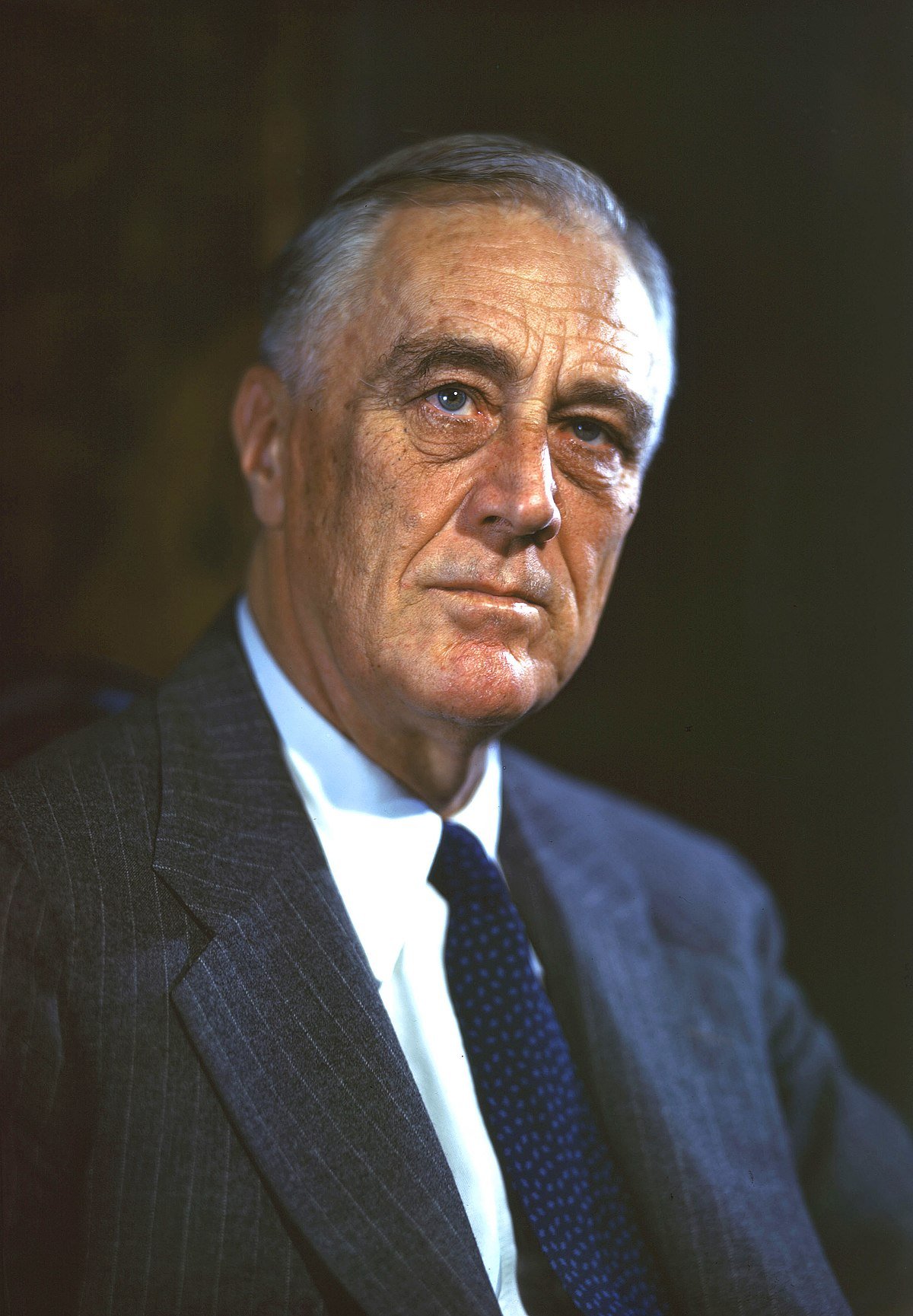
FDR Hiding his Disability Lesson
Students will engage in discussion about the Stigma associated with disability. They will then learn about FDR and how illness made him lose the ability to fully walk. They will then learn about how FDR, the people around him, and the press worked to keep his disability as secret as possible. This will lead to a discussion about the impact of his decision to hide his disability, and how taking a prideful approach to his disability could have changed how people perceived him and others with disabilities.
Image description: photograph of Franklin D. Roosevelt
